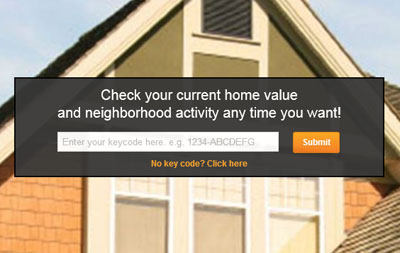TransUnion's 2016 Forecast Expects Consumer Credit Markets to Complete Recovery
TransUnion's 2016 mortgage and credit card
forecasts predict that the consumer lending market will have fully recovered by the end of next year from both the mortgage crisis and the ensuing Great Recession that concluded more than six years ago.
TransUnion forecasts the national mortgage loan serious delinquency rate (the ratio of borrowers 60 or more days past due) will decline from 2.50 percent at the end of 2015 to 2.06 percent at the conclusion of 2016. Consumer level mortgage delinquency rates peaked in Q1 2010 at 6.94 percent and have been declining nearly every quarter since.
Credit card serious delinquency rates (the ratio of bankcard borrowers 90 days or more delinquent on one or more of their credit cards) are expected to conclude 2016 at 1.46 percent. This would mark the fourth consecutive year of delinquency rates just below 1.5 percent, a nearly 50 percent decline in delinquency rates from the end of 2009.
"Our forecast highlights that we are no longer in recovery - we have recovered from the Great Recession," said Ezra Becker, vice president of research and consulting in TransUnion's financial services business unit.
"Both the mortgage and credit card markets are performing extremely well, with increased consumer participation and continued low delinquency rates. Millions of borrowers have gained access to credit card loans in just the past few years. And despite the fact that more consumers - and more non-prime consumers - are entering the housing market, delinquency levels have remained in check and balances are growing. This points to responsible lending practices and a consumer base that is clearly in a better position to make payments on their loans."
Inside the Mortgage Forecast
TransUnion's 2.06 percent projection for the year-end 2016 mortgage delinquency rate would place this metric in the range traditionally observed prior to the mortgage crisis. The mortgage delinquency rate has dropped on a yearly basis since reaching near-peak levels at the end of 2009.
"We have observed that a 'normal' delinquency rate fell between 1.5 and 2 percent in the past, and our forecast puts the nation back at this level," said Steve Chaouki, executive vice president and head of TransUnion's financial services business unit. "Newer vintage mortgage loans have been performing at this level for the last few years, but a combination of factors such as the funneling of bad mortgage loans through the foreclosure process, an improvement in the employment picture and an uptick in housing prices were needed to get back to normal."
Mortgage debt per borrower has also slowly gained in recent years, which is partly due to a rebound in housing prices. Debt levels are expected to experience a $9,000+ gain by the end of next year from the year-end low observed in 2012.
"This is a clear indicator that housing prices are recovering and consumers are gaining access to more mortgage loans," said Chaouki. "
Fannie Mae’s recent announcement that it would use trended data in the assessment of mortgage applicants could also very well boost mortgage originations in the second half of 2016."
A previous TransUnion analysis found that with the use of trended data, the percentage of consumers in the super prime risk tier would increase from 12 percent of the population to 21 percent. Super prime consumers generally have the greatest access to new loans at the lowest pricing.
TransUnion data show that the number of mortgage accounts has remained relatively low for much of the last three years, though growth has been observed during the last two years. As of Q3 2015 (latest available data), there are 52.6 million mortgage accounts, approximately 7 million fewer than in Q3 2009 (59.6 million).
"We are a long way from returning to pre-recession levels in terms of mortgage accounts, but changing consumer preferences for housing also may play a role in this slow recovery," said Chaouki. "If the economy continues to perform well, we believe the net number of mortgages will increase over the next year."
Inside the Credit Card Forecast
The serious credit card delinquency rate is expected to remain at around 1.5 percent, the year-end levels observed for the last four years. As usual, seasonal movements will occur throughout the year, but consumers are expected to maintain their strong payment performance.
The credit card industry has been performing well even as it has extended credit to millions of additional consumers during the last few years. As of Q3 2015 there were 368.8 million credit card accounts - up from the 354.8 million figure from the same quarter last year. In Q3 2009, there were only 337.8 million credit card accounts.
Further increases in credit card account volume could occur in 2016 as more financial institutions utilize new, sophisticated alternative data solutions such as CreditVision Link, which has been shown to score more than 60 million traditional "no-hits" and unscorable records.
"As delinquency rates for credit cards remain low, lenders are making card credit increasingly more available to consumers across the risk spectrum," said Becker. "Those consumers are generally accepting those card offers, using that card credit and managing the debt responsibly. In short, these are the hallmarks of a credit market that is functioning extremely well."
Credit card debt per borrower is expected to remain essentially flat in 2016, moving from an estimated $5,281 in Q4 2015 to $5,262 in Q4 2016. These numbers are well below levels observed just after the Great Recession ($6,051 in Q4 2009).
While debt levels have dropped more than 10% since 2009, average credit lines have not changed much in the last six years, moving from $21,942 in Q3 2009 to $21,613 in Q3 2015. The biggest changes to credit lines have occurred with subprime consumers (those with a VantageScore® 3.0 credit score lower than 601). In Q3 2009, subprime consumers had $6,993 in available credit; this has now dropped to $5,136 as of Q3 2015.
"Credit card lenders manage their portfolio risks by limiting credit access for higher risk borrowers," said Becker. "Much of this risk management occurred between 2009 and 2012, but we've seen stabilization on this front for the last three years. As the economy continues to improve and credit card performance remains strong, it's quite possible consumers in the subprime risk group could see more credit opportunities in the near future."
For more insights, click here to visit TransUnion's financial services blog feed.













